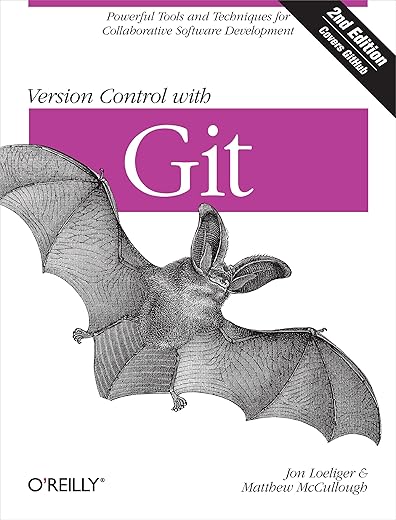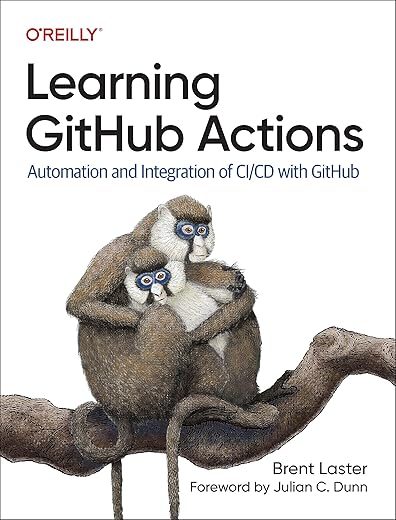
£42.98
Version Control With Git by Jon Loeliger Price comparison
Version Control With Git by Jon Loeliger Price History
Version Control With Git by Jon Loeliger Description
Discover Version Control With Git by Jon Loeliger
Unlock the power of version control with the definitive guide, Version Control With Git by Jon Loeliger. This comprehensive book, published by O’Reilly Media, is essential for developers and tech enthusiasts looking to master Git. With its clear explanations and practical examples, you’ll learn how to efficiently manage changes in your code, collaborate seamlessly, and enhance your overall workflow. Whether you’re a beginner or an experienced developer, this resource is indispensable.
Why Choose Version Control With Git?
This book stands out as one of the leading resources on Git, and it’s backed by extensive rave reviews and practical guidance. Here’s why this book is a must-have:
- In-depth Coverage: The book delves deeply into Git, giving you knowledge from the basics to advanced concepts.
- Real-world Applications: You’ll find practical examples that illustrate how to apply Git in everyday scenarios.
- User-Friendly Format: The paperback format is perfect for hands-on learners, making it easy to flip through and reference.
- Expert Author: Written by Jon Loeliger, a recognized expert in version control, adding authenticity to the lessons.
- Comprehensive Index: The thorough index allows for quick navigation to the topics you need to explore.
Main Features of the Book
This edition of Version Control With Git includes various features designed to enhance your learning experience:
- Length: With 452 pages, this book covers essential themes in detail, ensuring no crucial information is left out.
- ISBN Details: The ISBN-10 is 1449316387, and the ISBN-13 is 978-1449316389, making it easy to find and order.
- Physical Specifications: Weighing 1.75 pounds and measuring 7 x 1.25 x 9.19 inches, it’s portable enough for travel yet substantial enough for in-depth study.
Price Comparisons Across Suppliers
When considering the Version Control With Git price, options can vary significantly across different suppliers. As of now, prices range from $29.99 to $49.99. Comparing prices allows you to find the best deal that fits your budget. Use our price comparison tool to view current offers and ensure you get the best value for your purchase.
6-Month Price History Trends
A glance at the 6-month price history chart reveals notable trends for Version Control With Git. Prices have fluctuated, showing a peak of $49.99 during peak purchasing seasons. However, consistent dips during clearance events allow savvy shoppers to snag this valuable resource at a lower price. Tracking these trends can help you make an informed decision about when to purchase.
Insights from Customer Reviews
Customer feedback highlights both the strengths and weaknesses of Version Control With Git. Here’s a summary of popular reviews:
- Positive Aspects: Many readers praise Jon Loeliger’s clear writing style and comprehensive coverage of topics. Users appreciate the use of real-world examples which enhance understanding and retention.
- Noted Drawbacks: Some users mention the book’s length as daunting, suggesting that it may be overwhelming for complete beginners. However, they acknowledge that the detailed information is beneficial once they develop a basic understanding of Git.
Explore Unboxing and Review Videos
In today’s digital age, visual learning complements written resources. We recommend checking out several unboxing and review videos available on platforms like YouTube. These videos provide first-hand impressions and detailed overviews, helping you understand what to expect. Engaging with these visuals enhances your learning experience and can solidify your decision to purchase the book.
Conclusion: Take Your Git Skills to the Next Level
In summary, Version Control With Git by Jon Loeliger is an essential guide for anyone serious about mastering version control. With in-depth coverage, practical applications, and expert insights, this book equips you with the tools necessary to become efficient in your coding projects. Don’t miss the chance to improve your skills—compare prices now to find the best deal on this remarkable resource!
Version Control With Git by Jon Loeliger Specification
Specification: Version Control With Git by Jon Loeliger
|
Version Control With Git by Jon Loeliger Reviews (8)
8 reviews for Version Control With Git by Jon Loeliger
Only logged in customers who have purchased this product may leave a review.








Kevin Rohrbaugh –
I’ve been using Git for my side projects for nearly a year now, based primarily on knowledge I scraped together through conference sessions, screen-casts and cheat sheets. This is how a lot of people seem to get started with Git, but at some point it becomes necessary to really understand how it’s working and what some of the more advanced commands are for.
This book was exactly the right next step for me, moving me from stumbling around in Git to really understanding it. The author accomplishes this by taking the time to cover Git internals and to build on your knowledge as the book progresses. At first, I resisted all the plumbing explanations, since I doubt I’ll be contributing to Git itself, but after a chapter or two it becomes obvious that understanding what Git is doing internally is pretty important to understanding how to interact with it. Additionally, the internals are always explained from a layman’s perspective and never get so nuanced that they distract from the topic area being covered.
The book is organized so that you slowly build up knowledge of how Git works, with many topic areas sort of split into a basic and advanced chapter. This was a bit annoying at first, but since the more advanced topics require you to understand other aspects of the tool first, it’s necessary. As an example, you need to understand diffs, branching and merges before you can worry about patches, and you need to understand branching and merging before you can worry about remotes.
The book also ends with a decent overview of how to use Git with SVN, which is still pretty important given that a lot of organizations will be relying on SVN for quite some time. Unfortunately, this is one of the few areas that could have used a bit more coverage and seemed to lack the basic and advanced topic setup that worked so well for the rest of the book.
It also doesn’t provide much in the way of best practices for employing Git, although I don’t see this as a weakness. The closest it comes to recommending a strategy to use it with your team is to kind of sketch out how some very high-profile open source projects work with the tool, which is unlikely to directly apply. Fortunately, there’s a lot of content on the Web that covers use cases, branching strategies and best practices, so you won’t have trouble finding this information elsewhere. The author doesn’t take an opinion on such topics, instead focusing on how to make Git do what you want once you’ve decided on how you want to use it.
In the end, I recommend this book to anybody who has decided that Git is going to be their DVCS and intends to read the book sequentially, cover to cover. If you’re still trying to decide between Mercurial, Bazaar and Git, this is probably a lot more information than you want or require. If you’re looking for a quick reference, then the progressive structure may leave you scratching your head when jumping around topic areas.
Once you settle on Git, and want to invest the time to build up the conceptual framework you’ll need to succeed with it, this book won’t disappoint.
EG –
Solid discussion of Git for someone like me who has primarily been using CVS and SVN (Subversion) throughout their career, and has since started using Git. While I do not view this book as the “train wreck” that the top reviewer here describes, be aware that if you are completely new to version control systems (VCS) you will likely want to look elsewhere (at least for introductory explanations), because the authors jump right into Git usage without first providing much VCS background information.
After a cursory Git introduction, the authors provide what I consider the core of the text (the first 14 chapters of 21), covering installation, how to get started, basic Git concepts, file management, the Git index, commits, branches, diffs, merges, altering commits, the stash, the reflog, remote repositories, repository management, and patches. After this core, the discussion turns to hooks, combining projects, submodule best practices, using Git with SVN repositories, advanced manipulations, tips/tricks/techniques, and use of GitHub (although I decided to skip a couple of these latter chapters, such as the one on hooks, because I do not plan to use this feature in the near future).
Working through this book, I especially appreciated the diagrams (which explain Git objects and commit graphs) and the high number of working examples (of which I recently executed about 90% or so). The diagrams which explain branching and merging are the types of diagrams typical colleagues and I white board with each other to explain a given project state, helping enable both understanding of the material as well as providing future reference for visual depiction.
One of the reasons I decided to go with this book to get more familiar with Git, other than the fact that there are not many Git texts of which to choose in the marketplace, is because it was published relatively recently relative to when I purchased it about a year ago. Unfortunately, a potentially better book called “Pro Git (Second Edition)” that other reviewers have mentioned has since been published, something that happens when a book is not read soon after purchase.
Be aware that while almost every single example that I executed over the course of working through this book ran flawlessly (somewhat of a rarity with technology texts), I did notice on a few occasions that the command line output from a handful of commands was slightly different than what was represented in the material, and I attribute this to a lack of alignment between the Git version that the authors used (1.7.9) and what I used (2.1.4), downloaded as part of Cygwin. However, this aspect did not distract from the material presented by Loeliger and McCullough.
Although the chapter on installation (Chapter 2) does briefly mention the Git version that the authors used, the remainder of the book really does not address this topic apart from a few isolated instances. For example, the chapter on remote repositories (Chapter 12) mentions that differing versions will display a remote-tracking branch differently. When executing another example in the same chapter, I came across a warning that gets displayed when pushing to the depot because the implicit value of “push.default” was changed in Git 2.0 from “matching” to “simple”. And although minor, an attempt to clone the 1.5.x branch of SVN referenced in the chapter on using Git with SVN repositories resulted in a “repository moved temporarily” message (the most recent stable version of SVN is currently 1.8.13).
In general, however, this book provides a solid discussion of Git, and these are all but minor annoyances. A review of Git itself is not the purpose of a Git book review, but if you are at a point where you have solely heard about Git from colleagues who recommend that Git should be used because “it’s cool” or remark that “all you really need to know are like three commands, don’t worry about the other stuff” (I have actually heard developers make these types of comments), diving into Git with regard to what is happening under the covers is arguably the right way to go, and this book can help.
Dr Ron Catterall –
good book, o’reily quality
jayaich –
I needed something more than just googling about git as we were going to be using git more and more at work. This book seemed ideal. As others have said it’s not a pocket guide though. It does cover some areas that I may well never use, but it also covers the basics. And that’s good. I have used it as a reference, and on occasion had to go back and re-read certain areas in which I needed to understand something a bit more deeply.
Overall I found it easy enough to read, in depth but you don’t have to read everything if you don’t want to, and good as a reference book. It has certainly helped me with using git (from the command-line) at work.
Bartolomucci Fabrizio –
Very chaming and elegant, and also belle built to overcome normal life events. As it is with most things coming from Italy.
battlewithin –
It’s obvious from the start that this book is quite old. It regularly goes on about some major changes that took place around version 1.6 of Git. We’re out on version 2.37 right now, so all of that is basically ancient history.
Aside from that, it covers all you need to know and some you don’t. If you don’t use the command line or are afraid to, this book will offer guidance and reassurance that you’re looking at and doing the right thing.
I wouldn’t consider myself any sort of “power user” when it comes to Git; I’m happy to let IntelliJ do a lot of the heavy lifting. But that being said, there are things IntelliJ can’t do. Likely many more things I don’t or didn’t know about until reading this book.
I’m not saying that Git is by any means poorly documented. In fact, it’s quite the opposite. If you run `man git` from a Terminal window, you won’t make it passed the Description before encountering a reference to more documentation (i.e., `gittutorial`). Now, what I will say is that man pages are also not the easiest to get through… So this book fills the gap. You can always go back to the source, but sometimes it’s nice to have a more user-friendly option for quick reference. This book is that.
Felix J. Ogris –
Lesenwertes Handbuch zu git. Der Autor geht nicht nur auf die alltäglichen Befehle ein, sondern erläutert auch, wie git unter der Motorhaube arbeitet, was den einen oder anderen ungewohnten Arbeitsschritt verständlich macht.
Hayato –
Easy to understand and follow.
Good for those who want to star learning about git.